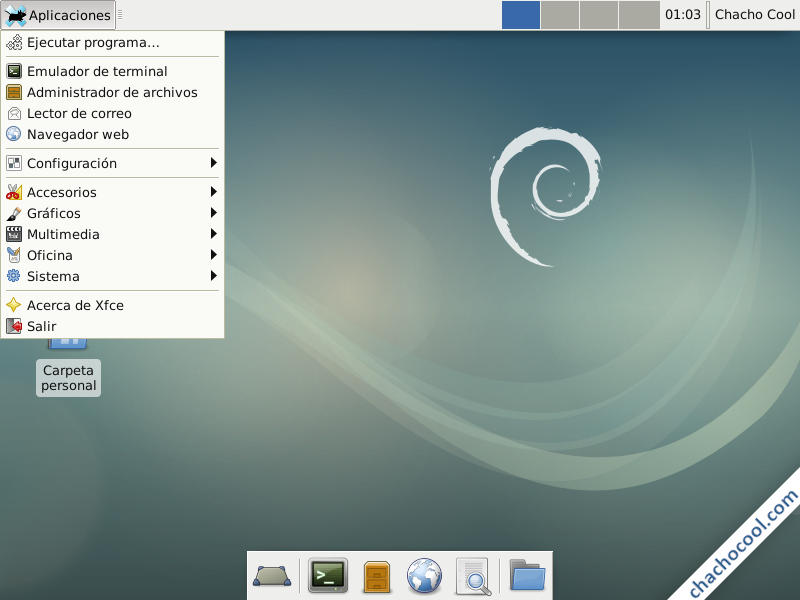

The upside to this is the low resource utilization which allows most of your computing power to be channeled to more important system-related tasks.Īnd this wraps up our guide. Running XFCE in Rocky LinuxĪs mentioned in the introduction, the XFCE desktop is quite simple and may not provide much in the way of stunning and appealing GUI features. This ushers you to the Xfce desktop environment. Voila The new desktop environment is in action If not changed, it will be the default desktop environment for the rest of the time. From the login screen, click the gear icon.
#How to install glftpd on debian xfce password#
Thereafter, provide your password and hit ENTER or click ‘ Sign In’ to login in. Log out of the current session or restart the system. If you already have GNOME installed, you need to click on the small gear wheel icon next to the ‘ Sign In‘ button and select the ‘ Xfce session’ option.

$ sudo echo "exec /usr/bin/xfce4-session" > ~/.xinitrc If you are running a minimal installation, configure the XFCE desktop environment to start automatically on boot time. Install XFCE in Rocky Linux Step 3: Set XFCE to Start Automatically The command installs all the XFCE group and module packages and other dependencies on your system. Therefore, to install the XFCE package, run the following command: $ sudo dnf groupinstall "Xfce" "base-x" Installation of the GreyLine FTP daemon on Arch Linux glFTPD scripts by. $ sudo dnf group list | grep -i xfceįrom the output, we can deduce that the XFCE package is available. Balsa is packaged for a wide range of Linux distributions, including Arch Linux. You can confirm that the XFCE package is a package group that is provided by the EPEL repository as shown. With EPEL installed, the next course of action is to install the XFCE package. Step 2: Install XFCE on Rocky and AlmaLinux The output yields detailed information such as the version installed, release, installation date, and size just to mention a few properties. Once you have installed EPEL, you can confirm its presence by executing the rpm command: $ rpm -qi epel-release In our case, EPEL is already installed, hence, no further action is required. To install EPEL on your system, run the following command: $ sudo dnf install epel-release

#How to install glftpd on debian xfce software#
The installation of the XFCE desktop environment requires us to, first, install the EPEL repository which is a repository that provides high-quality software packages for RHEL-distributions.


 0 kommentar(er)
0 kommentar(er)
